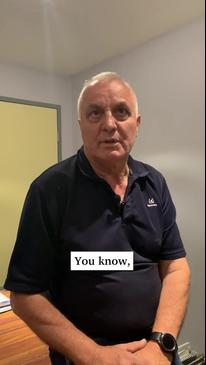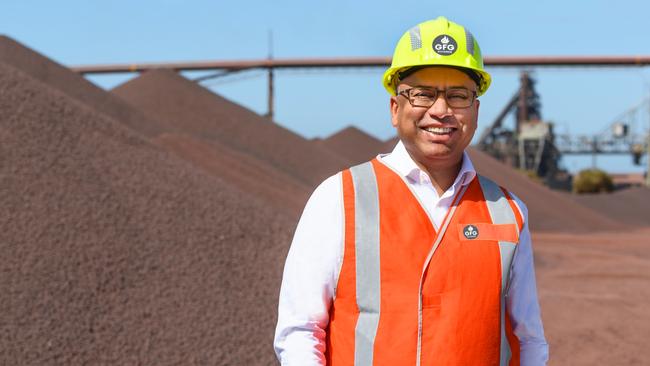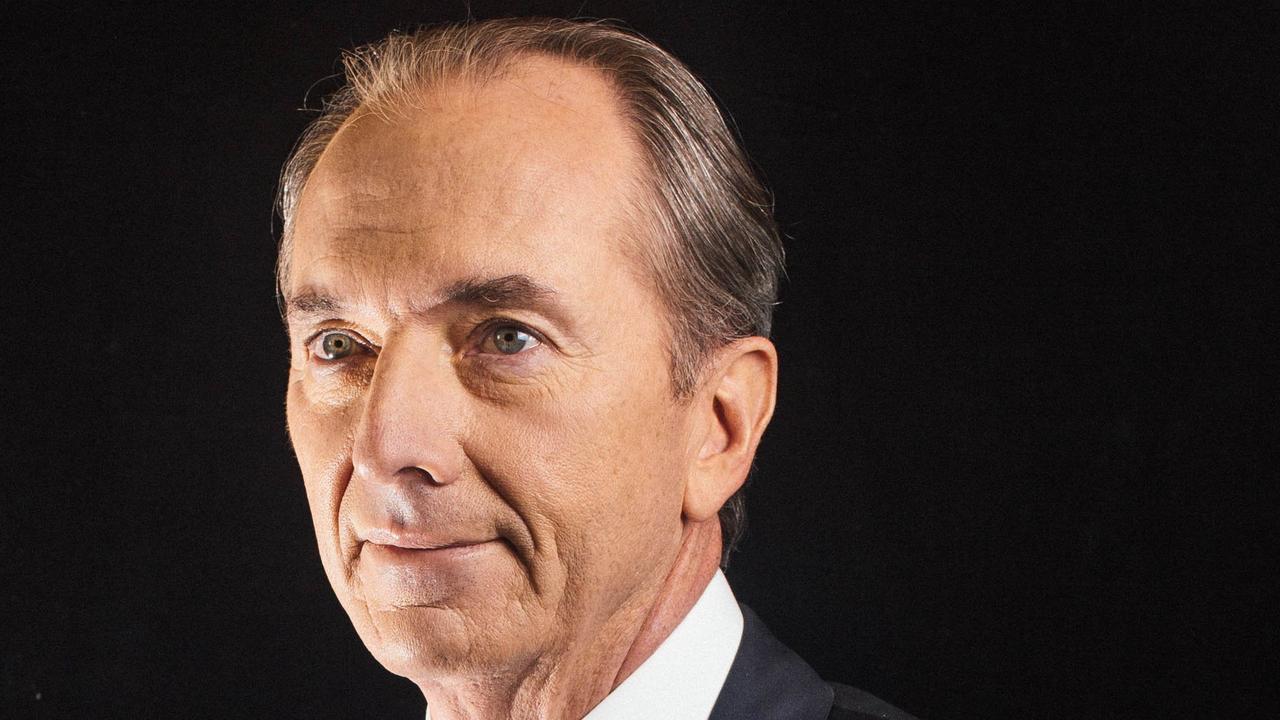Sanjeev Gupta says his group has propped up Whyalla to the tune of $400m over two years
Sanjeev Gupta says his broader business has been propping up the Whyalla operations to the tune of $1m a day which is a sign of the commitment he has to the South Australian steel town.

Business
Don't miss out on the headlines from Business. Followed categories will be added to My News.
The Whyalla steelworks and iron ore operations are being propped up to the tune of almost $1m a day, GFG Alliance executive chairman Sanjeev Gupta says, as the controversial British industrialist doubled down on his commitment to bring the steelworks back to profitability.
Mr Gupta also revealed that the timeline for a new electric arc furnace and direct reduced iron plant at Whyalla – an investment likely worth in the vicinity of $1bn – was fluid, and reliant on increased gas supply to Whyalla – which they were working with the South Australian government to resolve.
GFG initially aimed to have the new infrastructure, which is at the heart of its aspiration to make low carbon emission green steel, in place by 2025.
The company revealed earlier this year that the timeline had slipped to 2027.
But now the timeline is effectively three years from when a commitment to increased gas supply to Whyalla is made, Mr Gupta told The Australian.
In the meantime, Mr Gupta said the company was working hard to bring the blast furnace, which is offline for the second time this year, back into operation and up to full production of about one million tonnes per year.
He said the steelworks would return to profitability under this scenario, helped by macroeconomic tailwinds such as an improvement in steel prices and lower commodity prices on the input front.

Mr Gupta also said that both of his Australian businesses, Liberty Primary Metals Australia – which owns the steelworks – and InfraBuild, were profitable, and it was only the Whyalla operations which were struggling.
Mr Gupta said the amount of money the wider GFG group had pumped into Whyalla was an indication of the commitment he had to the steelworks.
“In the last two years alone, Whyalla – I’m talking about iron ore and steel together – has taken more than $400m from the group,’’ he said.
“They received aid in the form of cash from the group of more than $400m – it’s almost getting a million dollars a day at the moment.’’
Mr Gupta said he was “supremely confident’’ the blast furnace would come back online in the near future, while not being able to put a firm timeline on it.
“There’s no issue with the blast furnace – there’s no problem with it,’’ he said.
“There is a process to get these things done. It’s more an art than a science.
“It’s not going to be months. It’s basically days, weeks. It’s definitely not months.
“We have a new plan now which we’re basically already putting into play, that we will run the blast furnace and we’ll take it back to its original one million tonne plus production.’’
The Whyalla operations were losing money when Mr Gupta bought them out of administration in 2017, and returned to profitability in about early 2021.
The blast furnace problems and low global steel prices have pushed it back into the red over the past financial year however.

Mr Gupta said there was no debt attached to the Whyalla operations, and that should the electric arc furnace and DRI plant plans progress, he was confident the company would be able to raise the funds to put them in place.
“Capital, one way or another, will come through, because there is a need for it,’’ he said.
“The customers want it, the regulators want it, countries want it, the consumers want it.’’
The critical missing piece of the puzzle for Whyalla, Mr Gupta said, was increased gas supply.
“The issue is we don’t have the infrastructure for gas at the moment,’’ Mr Gupta said.
“We’ve addressed to the government, and we said they need to help resolve that, because it’s something which is national infrastructure.
“So that needs to be solved. They have undertaken that they will help us resolve that. So if that’s resolved, then that gives it a gives it the foundation stone, which hydrogen will be one day. But in the meantime, natural gas can help as a transition.
Until the gas issue was resolved, the new infrastructure is effectively on hiatus however.
“The timeline is roughly three years from the time that we have a bankable solution,’’ Mr Gupta said.
Mr Gupta said there was already a lateral gas pipeline to Whyalla, which would need to be replicated, but that wasn’t a complex process.
He told The Australian in May that the company expected the new gas connection to be in place in 2027.
A spokesman for the South Australian state government said it had recently closed an “exhaustive expression of interest process” for the production of green iron and steel in Whyalla.
“There is clear feedback from this process that a key gap is the need for increased gas supply, and this government has long reiterated that gas will play a crucial role in South Australia’s energy transition,’’ the spokesman said.
The blast furnace at Whyalla was out of action from mid March until June, with damage to the shell delaying it coming back into production when it was being restarted.
The blast furnace went offline again in mid-September when unwanted materials were introduced into it and is yet to come back online.
LPMA cut 50 white collar jobs earlier this year and another 100 or so were to go across the mining division in a staged process over recent months.
There have also been complaints from suppliers of late payments.
Mr Gupta said on Tuesday that in terms of payments to suppliers, there had been some delays and issues, “but they’re all being handled’’.
“We’re working in partnership with them, there’s been good resolutions, and we’re working in lock-step with them in terms of how we move forward, and they are all supporting and continuing. There’s no fundamental issue.’’
Mr Gupta also downplayed concerns around money being moved out of InfraBuild to GFG Alliance in the UK – which would be used to pay back debts owed to the administrator of its failed financier Greensill – saying the financial structure in place was a longstanding one with the funds in question always committed to paying down the group debt.
The Australian reported recently that ratings agency Moody’s understood that GFG was negotiating to have “restricted” cash on the InfraBuild balance sheet freed up, with that money to be used to pay debts owed by GFG to the Greensill administrator.
Mr Gupta said the money on the InfraBuild balance sheet – which was $626.7m according to the most recent financial report – had always been earmarked for the Greensill payment.
Grant Thornton, the administrator of Greensill which failed spectacularly in 2021, revealed in documents filed with Companies House in Britain recently that it has appointed a restructuring adviser to canvass its options around the $US587.2m GFG Alliance owes to Greensill.
More Coverage
Originally published as Sanjeev Gupta says his group has propped up Whyalla to the tune of $400m over two years





